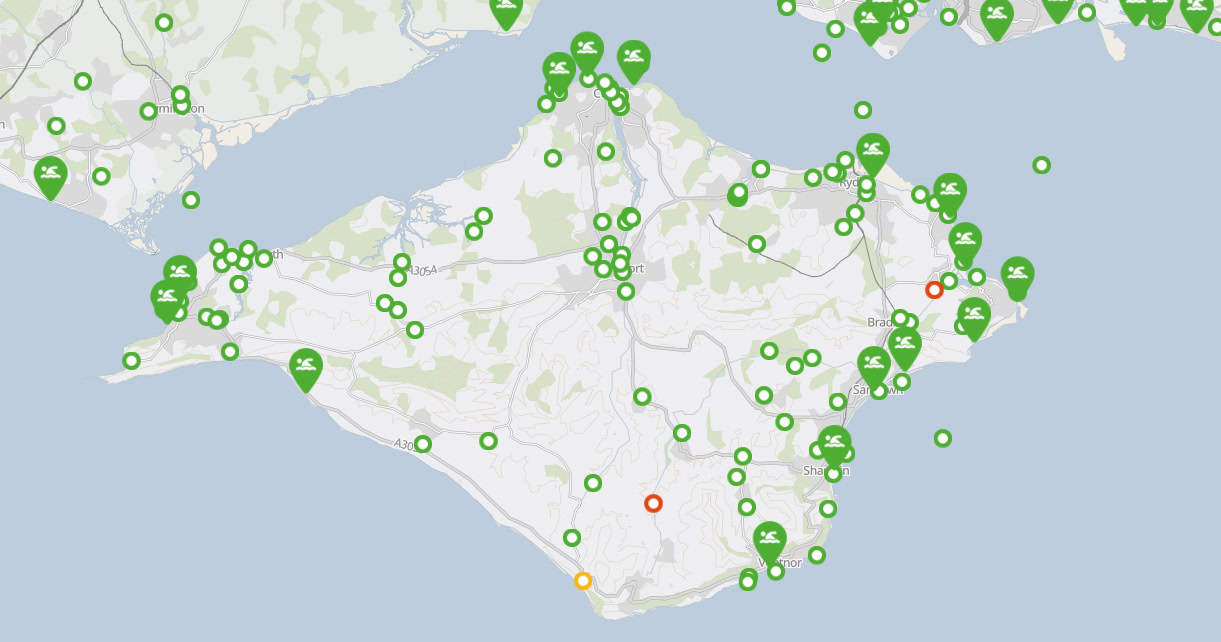The way Southern Water customers can view storm overflow activity across the region is changing, thanks to a major upgrade which will go live one week from today.
From Wednesday 13th November, Southern Water’s existing Beachbuoy online tool will be replaced by the new Rivers and Seas Watch platform.
Featured every single storm overflow
It will feature every single combined sewer outfall (CSO) – also known as storm overflows – along the 700 miles of coastline and the scores of rivers and streams which criss cross Kent, Sussex, Hampshire and the Isle of Wight.
It’s a far cry from the service when it was launched in July 2018. It was the first alerting service by a water company, but was all compiled by hand and covered just Langstone and Chichester Harbours and Ventnor, Hillhead, Joss Bay and Bexhill bathing waters.
Advanced modelling
The new tool uses advanced modelling of tides, currents and winds to provide more information of the possible impact of storm releases to local water quality.
So users can make the most of this service, they must sign up for alerts for their local beaches, as data protection rules mean we cannot simply carry previous Beachbuoy users over.
Gallagher: Major improvements
Tom Gallagher, Open Water Improvement Lead, said,
“There are major improvements to the look and feel of the site.
“Each outfall is colour coded – as before, green indicates no releases in the last 72 hours, amber shows there has been a release up to 72 hours ago, and a red icon highlights a release within the last 24 hours that our modelling shows could impact water quality.”
Why are there storm overflows?
Storm overflows are part of how the wastewater system was designed. Before Southern Water existed there was virtually no treatment of any wastewater discharged into the sea so surface water and highway drains were automatically connected into the sewer system.
With the construction of huge wastewater treatment works like Peacehaven, which treats 51 million litres of sewage on an average day, rain could overwhelm the system and back up through manholes or into people’s homes so when storm tanks are full, the excess spills over.
Rivers and Seas Watch
The key aspects are that Rivers and Seas Watch are:
- Created with our community and with experts. We ran a private beta initially, public beta and now full launch to ensure we made Rivers and Seas Watch a reliable and valuable service.
- We have provided regular updates to Rivers and Seas Watch based on community feedback
- It includes many recommendations from the BB independent review.
- Rivers and Seas watch in its current form is the first step – there is a roadmap to continue to improve the service over the months and years to come.
Luke Hyttner, Project Lead, said,
“Rivers and Seas Watch has been created following a customer-first approach, engaging extensively with our community to understand their needs, wants and feedback from Beachbuoy. This has been invaluable in allowing us to really focus our efforts on improving how we communicate this important information to the public in a transparent, accurate and timely way.”
Article edit
1pm 11th Nov 2024 – Section beneath ‘Rivers and Seas Watch’ added
News shared by Southern Water. Ed





